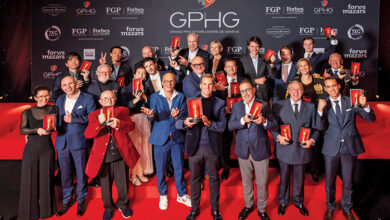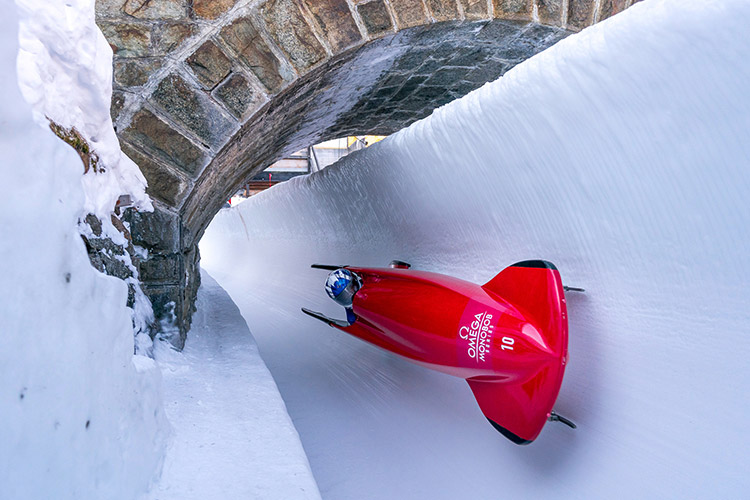
Beijing 2022 will mark a special milestone for OMEGA as the Swiss brand celebrates its 30th occasion as Official Timekeeper of the Olympic Games. As the world gears up to watch – and for a lucky few, to participate – in the 2022 Winter Olympics, we bring you a short synopsis of what OMEGA has achieved in its timekeeping saga till date and a sneak peek at the watches that the marque has unveiled for the occasion…
For exactly 90 years, OMEGA has been a leading name in sports measurement, recording the dreams of the world’s best athletes, and continually developing the technologies that every result depends on. In fact, when OMEGA began its role in 1932, the company fulfilled its task with just one watchmaker and 30 stopwatches.
This year in Beijing, the operation will entail a team of 300 timekeepers and 200 tonnes of equipment, proving just how much this vital role has grown, and how the standards of excellence have been continually pushed.
Today, OMEGA delivers a level of precision that is almost unquestionable. Of course, OMEGA also has valuable experience in Beijing. In summer 2008, the brand arrived as Official Timekeeper, witnessing one of history’s most memorable Olympic Games, while also enjoying a spectacular welcome from the host city. There is certainly no doubt that the world is once again set for an event of epic proportions.
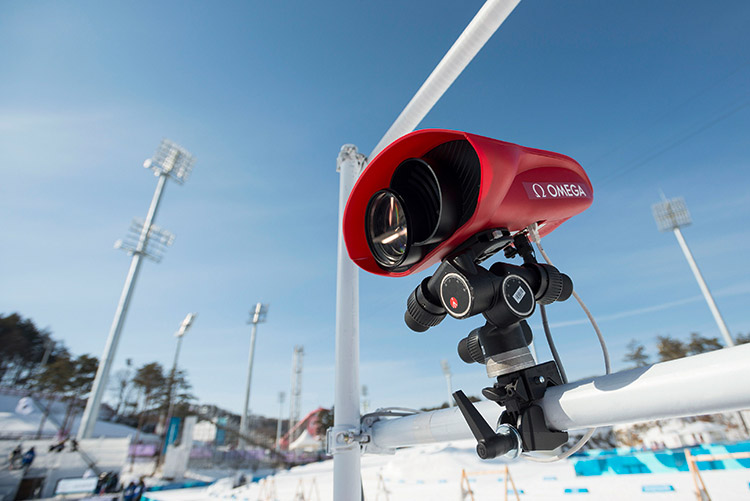
OMEGA’S WINTER MILESTONES
OMEGA’s first Olympic Winter Games
1936 was the first year that OMEGA officially timed the Olympic Winter Games. With a single watchmaker and 27 stopwatches, the brand fulfilled is role admirably, measuring every moment at Garmisch-Partenkirchen. The brand had already been chosen as the first ever Official Timekeeper of the Olympic Games when the summer events were contested in Los Angeles in 1932.
Electronic era arrives
It was in 1948 that for the first time OMEGA’s photoelectric cells were used at the Olympic Games. This revolutionary technology automatically stops the clock on the finish line of races, replacing the unreliable capabilities of the human eye. During the summer events that same year, OMEGA also introduced its first Photofinish Camera at the Olympic Games, changing the face of timekeeping forever.
Starting Gates
1956 saw OMEGA introduce starting gates in alpine skiing at the Olympic Games. Making their début in Cortina d’Ampezzo, the gates signalled the beginning of each run. As soon as the athletes passed through, the OMEGA Quartz Recorder was triggered.
Time on screen
In 1964, OMEGA was able to superimpose the times of Olympic Games performances onto the bottom of television screens. This was all thanks to a new piece of technology known as the Omegascope. Never before had spectators outside the venues been so quickly and well-informed about the events taking place. From this moment in Innsbruck, the concept of “real-time” sports reporting had arrived.
Providing statistics
OMEGA introduced “Integrated Timing” at the Olympic Games in 1968. With events taking place in Grenoble, OMEGA was able to supply the press, media, television channels, judges and the general public with additional information about athletic performances as well as in-depth statistics. Furthermore, the updated Omegascope could also now superimpose complete competition details onto TV screens, including athlete names, live times, final times, intermediate times and speeds.
Displaying live rankings
1980 was the year that OMEGA introduced its Game-O-Matic technology. The system could immediately calculate and display an athlete’s ranking as soon as he or she crossed the finish line in alpine skiing events. It featured its own data-processing equipment and met all of the expectations of the Organizing Committee in Lake Placid that year.
Photofinish camera
In 1992, OMEGA introduced its new Scan’O’Vision system in Albertville. Photofinish cameras had been used at past Olympic Games by OMEGA, but this updated technology could now digitally measure times to the nearest 1/1000th of a second. The improvement in precision was astounding and heralded a new chapter in the science of timekeeping.
Wearable technology
2006 saw OMEGA introduce special transponders worn by athletes. Primarily used in the new team pursuit event in speed skating in Turin, the transponders were worn on the ankles of competitors and were able to send and receive radio signals, allowing OMEGA to capture specific time measurements.
Electronic Start Pistol
2010 heralded the arrival of the new Electronic Start Pistol in Vancouver. Instead of using a traditional gun, OMEGA introduced a streamlined, futuristic device composed of a flash gun and a sound generation box. When the starter presses its trigger, three things happen simultaneously: a sound is “played”, a light flash is emitted and a start pulse is given to the timing device.
Whistle Detection System
Exciting new technologies at Sochi in 2014 included the arrival of the Whistle Detection System in Ice Hockey. This was worn by officials, and the microphone allowed them to speak to the scorekeeper on the timing bench. The system also stopped the clock as soon as it detected the sound of a referee’s whistle. This would happen at least half-a-second faster than any timekeeper could manually achieve.
A new era
In PyeongChang, in 2018, OMEGA welcomed an exciting new era of motion sensor and positioning systems. In certain events, the timekeeper could now measure a full range of athlete data – from the live speed of an alpine skier to the live height of a spectacular ski jump. With this technology, it became clear where an athlete won or lost their event and gave spectators a much greater understanding of the sports they’re watching.
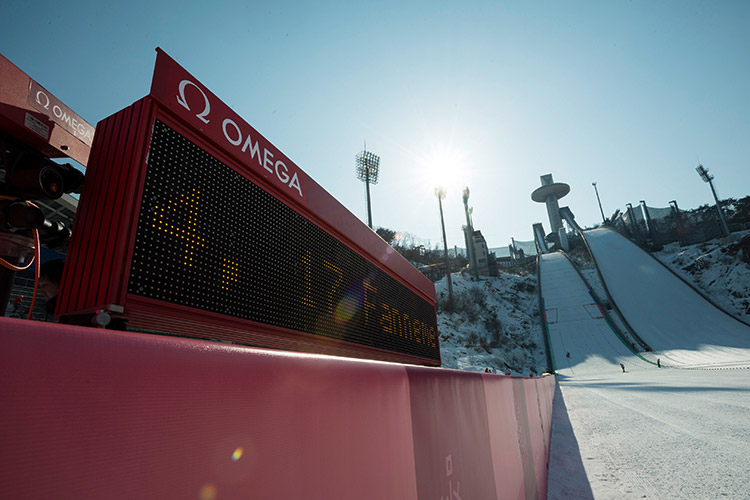
OMEGA’S MODERN TIMEKEEPING
Scan’O’Vision MYRIA
Placed on the finish lines of races, the Scan’O’Vision MYRIA is the most advanced photofinish camera in OMEGA’s history. At the moment that matters, it can record up to 10,000 digital images per second, producing a composite photo that gives judges a clear view of the official rankings and times of each event.
Snowgate technology
OMEGA’s Snowgate technology was introduced at Vancouver 2010 and delivers precision at the beginning of an alpine skiing event. The system emits a starting pulse when the “wand” is at precisely the same angle for every competitor. The timing system is then activated automatically when an athlete bursts through.
Photoelectric cells
The little red boxes placed on the finish line in speed skating are known as photoelectric cells. They emit beams of light across the line, just two or three centimetres above the ice. As soon as the winning competitor’s skate crosses the finish, the clock is automatically stopped. The system guarantees precision at the moment of victory and gives timekeepers the most accurate finishing time possible.
Quantum Timer
Of course, OMEGA no longer uses mechanical stopwatches to time Olympic Games events. Today, the seconds are electronically counted on a Quantum Timer, which offers an enhanced resolution of one-millionth-of-a-second. Driven by a micro crystal component embedded in the timer, it is five times more accurate than previous versions.
Hi-resolution scoreboards
OMEGA’s hi-resolution scoreboards display not only text and live information, but also animations, athlete pictures and visual imagery. Using modern effects, winners’ names, results and their nation’s flag are boldly displayed, adding to the drama, thrill and excitement of each event.
Motion sensor and positioning systems
Technology is moving fast – and so is OMEGA’s timekeeping role. Today, the brand is not only measuring results, but also everything that takes place within the event. With a mix of image-tracking cameras and sensors worn by the athletes, OMEGA can show the live speed of a bobsleigh or the live positions in speed skating, giving information that enables commentators, spectators, athletes and coaches to fully analyse each sport as it happens.
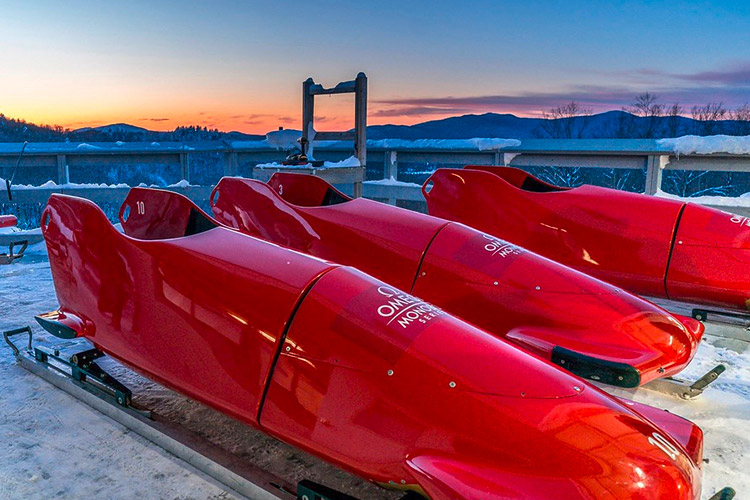
NEW TECHNOLOGY FOR BEIJING
Figure Skating – Jump Analysis
As a continuation of OMEGA’s motion sensor and positioning systems, the sport of figure skating will now be analysed in much greater depth. Six cameras will be placed around the ice, and during single skater events, they will be able to capture a range of live data, including the height of a jump, the length of the jump, and the amount of time a skater spends in the air. By tracking positions and motions, the new system will be a fascinating way to understand the skater’s execution of their routine, and to see how each competitor compares against another.
Speed Skating – False Start Detection
False starts will be revolutionised in Beijing. Until now, the sport relied on the judge’s eye to detect any movement of the athlete or their blades before the start of a race. Now, OMEGA will utilise its image tracking system to visually detect a false start, providing much more reliability in this crucial moment. With one camera positioned in each lane, the system will be visually monitored by officials, who will provide the judge with an immediate indication should a false start be observed.
Ice Hockey – In-Game Display
OMEGA is introducing a new in-game display for the sport of Ice Hockey, with LEDs integrated within the plexiglass around the rink. The one-sided transparent clock will be able to indicate game time and penalty time shown in the middle of the rink between the two penalty boxes. This display will be of a great added value to players now receiving such crucial information all along during the game.
MONOBOB
For OMEGA, Monobob is more than a sport. Since 2011, this dynamic event has been a passion for the brand. Not only has OMEGA helped to pioneer the development and growth of Monobob, but it was also there 10 years ago in St. Moritz, when the sport was first introduced at the iconic Olympia Bob Run. This year in Beijing, OMEGA is celebrating the arrival of Monobob as an Olympic Winter Games event.
At Beijing 2022, the sport will be contested exclusively by women, and will feature a range of OMEGA timekeeping equipment. This includes some of the technologies often featured in traditional bobsleigh, including sensors inside each monobob, which can measure various factors such as G forces, angles, trajectory and acceleration. Furthermore, thanks to antennas placed along the track, OMEGA will be able to transmit the monobobs’ live speeds and top speeds, allowing spectators at home to see exactly where a competitor won or lost time.
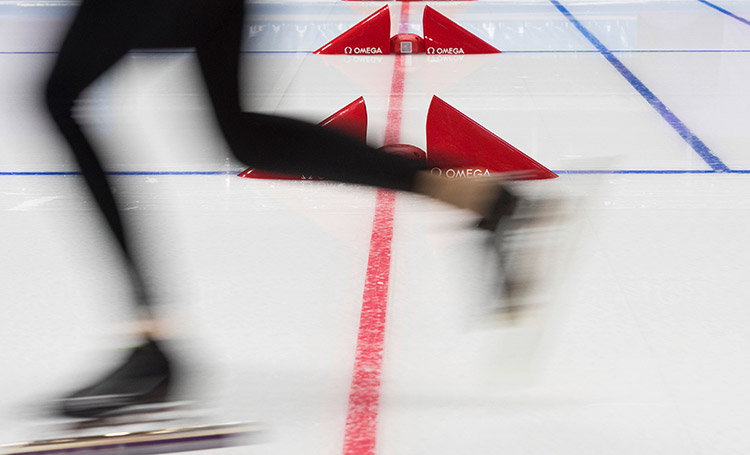
OMEGA WATCHES FOR BEIJING 2022
Seamaster Aqua Terra Beijing 2022
In tribute to its role as Official Timekeeper, OMEGA has launched this 41 mm watch in stainless steel, with a matching bracelet and domed sapphire crystal on the face.
Most noticeably, OMEGA has brought the theme of winter to life by introducing a white ceramic dial with a frost-finish pattern. This icy look is a superb tribute to the dramatic sports we can expect to see in Beijing – whether its Alpine Skiing, Bobsleigh, Speed Skating or Ice Hockey.
To complement the unique pattern, the dial also includes blued indexes and hands filled with white Super-LumiNova, as well as the colour red used for the Seamaster name and the four quarter numbers on the minute track. Turning the watch over reveals a stamped Beijing 2022 emblem on the caseback, as well as the Aqua Terra’s familiar waved edging.
Behind this sits the OMEGA Co-Axial Master Chronometer Calibre 8900. With a performance that any athlete would be proud of, this OMEGA calibre once again reaches the industry’s highest certified standard of precision and magnetic resistance. Sports fans who choose this Seamaster will find it delivered inside a distinctive Olympic Games presentation box, along with OMEGA’s famous 5-year warranty.
Seamaster Diver 300m Beijing 2022 Special Edition
This 42 mm Special Edition watch is crafted from stainless steel and includes a unique grade 5 titanium bezel ring with a diving scale in positive relief. On the blue ceramic [ZrO2] dial, you’ll find laser-engraved waves along with rhodium-plated indexes and hands filled with Super-LumiNova.
As a special tribute to Beijing 2022, there are also five special minute-markers at 2H, 4H, 8H, 10H and 12H, with each one created in the five colours of the iconic Olympic Rings. On the reverse side of the watch, the polished and brushed caseback includes a stamped Olympic Winter Games Beijing 2022 logo.
OMEGA’s patented NAIAD LOCK system keeps all the engravings in perfect alignment, while behind the caseback sits the OMEGA Co-Axial Master Chronometer Calibre 8800. Inside the white special presentation box, each timepiece is set on a polished and brushed stainless steel bracelet including OMEGA’s patented extendable foldover rack-and-pusher with an extra diver extension. The timepiece is water resistant up to 1000 ft. and comes with OMEGA’s full 5-year warranty.





